It always amazes me how you can make such a showstopper dessert with basically two ingredients, egg whites and sugar!
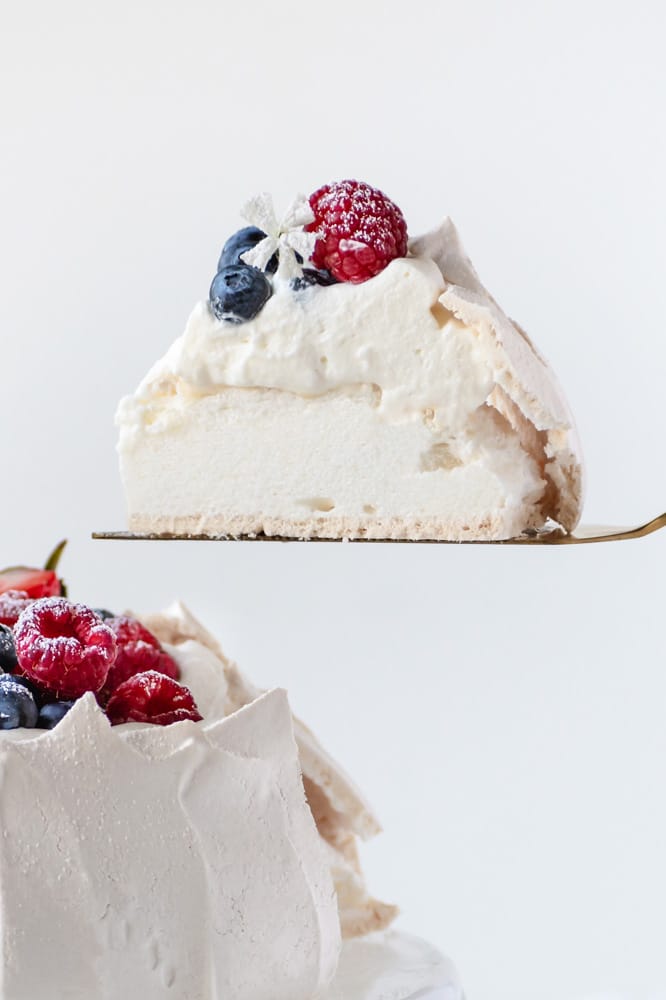
Why is this dessert called Pavlova?
This dessert is named after a Russian ballerina, Anna Pavlova. They made this dessert in her honor when she was on tour in Australia or New Zealand. There’s still a debate going on which country made it first!
What do we need to make Pavlova?
The ingredients for pavlova are pretty straightforward.
You’ll need:
1.Egg whites:
- The egg whites need to be at room temperature, so make sure to take them out of the fridge for at least an hour before you start.
- Eggs are easier to separate when they are cold because the yolks are firmer and less likely to break. So Separate the eggs when they are cold and leave the whites at room temperature for an hour.
- It is very important that there are no bits of egg yolks in the whites. If one of the yolks break while separating, just keep that batch for omelet or another recipe and start fresh. Because any trace of fat in the whites causes them not whipping properly.
- Like the egg yolks, you need to also make sure that your mixing bowl and whisk are super clean. So after you wash them, wipe them with some white vinegar or lemon juice.
2. Superfine sugar (also known as caster sugar):
- If you don’t have superfine sugar, you can pulse granulated sugar in a food processor or blender a few times. This is what I got after pulsing granulates sugar in a mini blender:
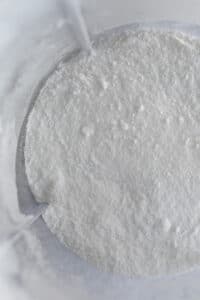
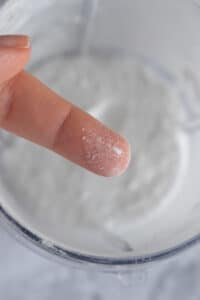
- Sugar is not only a sweetener, it also helps egg white molecules to stabilize. That’s why we can’t reduce the amount of sugar in a pavlova recipe.
3. Cream of tartar:
- Cream of tartar is an acid that acts as an egg white stabilizer and helps the meringue keep its shape. Some suggest that you can replace it with twice the amount of white distilled vinegar, but I prefer cream of tartar.
- You can test the cream of tartar for freshness by adding half a teaspoon of it to half a cup of warm water. Then sprinkle some baking soda in, if it starts foaming, it’s good to use.
4. Lemon juice:
There is a small amount of lemon juice in this recipe which again helps with the egg white stabilization.
5. Cornstarch:
Cornstarch is what makes pavlova different from a crisp meringue cookie, because it causes the inside of meringue get soft and marshmallow-y.
6. Vanilla extract:
Vanilla extract is added for flavor. Although, it causes the pavlova to have an off-white color, omitting it is not recommended because it helps covering the egg smell.
How to make a Pavlova:
1- Avoid making pavlova on rainy days or humid environment. I always check the weather and if the humidity is more than 50 percent, I’ll just do it another day. Also, to provide a dry kitchen environment, it’s better not to wash the dishes or laundry or turn on the faucet before, during or after the pavlova is in the oven (Always here for an excuse to not wash the dishes am I right?!).
2- One other important step is to make sure our mixing bowl and whisk are super clean and free of any traces of fat. Because fat causes the egg whites to deflate and not whip and increase in volume properly. The best way to make sure is wiping them with some vinegar or lemon juice.
3- Separate the eggs into a clean bowl and add them to your mixing bowl as you go. Make sure there aren’t any yolk pieces in the egg whites. It’s easier to separate the eggs when they’re cold because the yolks are more intact and less likely to break and mix in with the whites. If you see any pieces of egg yolks in the whites, just keep those eggs for another recipe and prepare a new batch. Let the egg whites come to the room temperature, about 30 minutes to one hour.
4- Preheat the oven to 300°F (150°C). Use a bowl or a plate to draw a 7 inch circle on the back part of a parchment paper and place it on a baking sheet. The circle must be on the back side so that it doesn’t transfer to our meringue. We will use this circle as a guide to spread the meringue on the parchment paper.
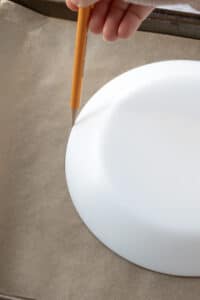
5- Once the egg whites are at room temperature, add cream of tartar and start beating on medium-low speed, which is 4 out of a 10 scale mixer. First you see some large bubbles forming but as you keep mixing the bubbles will get smaller. After about 5 minutes the egg whites will reach medium peak.
6- Starting adding superfine sugar SLOWLY and about 1 tablespoon at a time and continue beating on high speed. Wait 30 seconds in between adding sugar, so that there’s enough time for them to dissolve in the egg whites. After you added all the sugar, continue beating on high until the meringue is white and glossy and can hold stiff peaks.
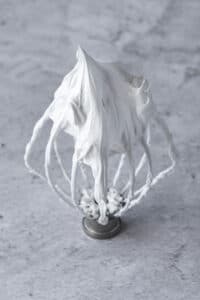
7- Check to see if the sugar is fully dissolved in the mixture by rubbing some meringue in between your fingers, if it feels gritty you need to mix it some more.
8- When all the sugar is dissolved, add vanilla extract and beat a few seconds until it’s incorporated. Then with a spatula, gently fold in vinegar and cornstarch.
9- Transfer the meringue onto the parchment paper and use the circle you drew as a guide to shape your pavlova. You can make some designs on the side by swooping your spatula upwards.
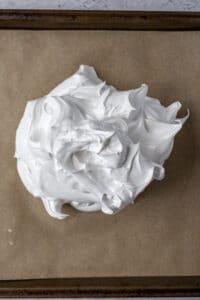
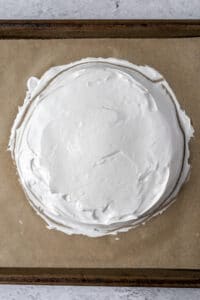
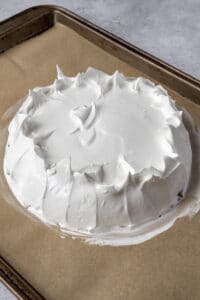
10- Place the baking sheet in the preheated oven and immediately reduce the speed to 250°F. Bake for 75 minutes, then turn the oven off and let the pavlova cool down completely in the oven, about two hours. Do not open the oven door.
11- And finally we can top it off with some whipped cream and fresh fruits! Once you top the pavlova with cream, you should serve it immediately because as it sits, it can get a little soggy.
Why is my pavlova weeping?
Look at this failed pavlova as an example, you can see a liquid weeping out of the pavlova. That’s just the undissolved sugar in the egg whites.
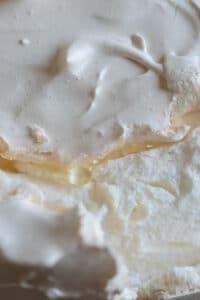
Solution?
- Make sure all the sugar is dissolved in the egg whites by rubbing some of the meringue mixture between your fingers. It shouldn’t feel gritty. Also, use superfine sugar because granulated sugar is harder to dissolve.
- Ahhh humid days! The enemy of a meringue! Make sure you are not making pavlova on humid days. The humidity percentage should be below 50 percent or the sugar particles which love water, will absorb it and then cause weeping.
What should I do with the egg yolks?
Here are some recipe suggestions to use up the extra egg yolks:
This post contains affiliate links.
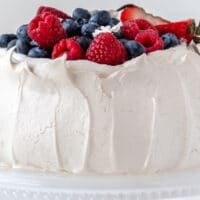
Pavlova Recipe
Ingredients
Meringue:
- 4 egg whites - at room temperature
- ½ teaspoon cream of tartar
- 1 cup superfine (caster) sugar - 200 grams
- 1 teaspoon vanilla extract
- 1 teaspoon Lemon juice
- 2 teaspoon cornstarch
Toppings:
- 1 cup heavy whipping cream
- 1 tbsp sugar (or more to taste)
- ½ tsp vanilla extract
- variety of fresh fruits like berries, kiwis and passion fruit
Instructions
Make the Meringue:
- Preheat the oven to 300°F (We will reduce the temperature once we put the pavlova inside). For sensitive recipes such as pavlova, It's best to have a oven thermometer to make sure the temperature is accurate. Line a baking sheet with parchment paper, draw a 7 inch (18 cm) circle on the back side of the parchment paper, I used a plate to draw the circle. We will use this circle as our guide to spread the meringue into a perfect circle.
- Wipe your mixing bowl and whisk with vinegar or lemon juice to make sure there are no traces of fat left on them.
- If you don't have superfine sugar, you can pulse granulated sugar in a food processor or blender a few times until the texture is super fine.
- Separate the eggs into a clean mixing bowl. If any pieces of yolks get into the whites, discard them. Let the egg whites come to the room temperature, about 1 hour.
- Add four room temperature egg whites and cream of tartar into a mixing bowl (I use a kitchenAid mixer), and start mixing on medium low (4 on a 10 speed mixer) until it reaches medium peaks. It takes about 5 minutes.
- Once the egg whites are at the medium peaks stage, start adding the sugar 1 tablespoon at a time and beat on high speed. After adding each tablespoon, wait about 30 seconds so that the sugar is dissolved and incorporated in the egg whites. If there are sugar granules stuck to the side of the bowl, scrape it with a spatula to make sure there aren't any pieces of sugar undissolved. When all the sugar is added, continue beating on high speed until it's glossy and white and stiff peaks form. It means when you hold the whisk up, the meringue keeps its shape. Rub some of the meringue between your fingers to check if the sugar is dissolved, if it feels gritty you should beat it more. Continue checking it every couple of minutes.
- When the meringue reached stiff peaks and all the sugar is dissolved, add vanilla extract and beat for a few seconds until incorporated.
- Gently fold in lemon juice and cornstarch.
- Transfer the meringue onto the prepared baking sheet but don't use the meringue on the top side of your mixing bowl where there may be some undissolved pieces of sugar left. Spread it with a spatula, using the circle you drew as a guide. You can also use your spatula to create vertical lines on the sides.
- Place the meringue in the preheated oven and immediately reduce the oven temperature to 250°F. Bake for 75 minutes. Then turn off the oven and let the pavlova cool down in the oven for 2 hours or overnight.
Prepare the topping and assemble:
- Whip cream, sugar and vanilla extract in a bowl, with a whisk attachment on high, until soft peaks form.
- Once you are ready to serve pavlova, place it on a plate or cake stand and top with whipped cream and fresh fruits of your choice. Serve immediately.
Notes
- Avoid making pavlova on rainy days and make sure you do not turn on the faucet while making it. Humidity causes the pavlova to collapse and weep while or after baking.
- Make sure all the sugar is dissolved in meringue before baking it.
- All the tools and bowls must be super clean and free of any traces of fat.

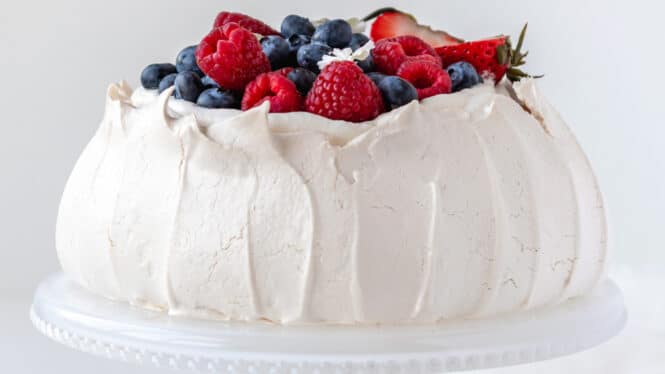
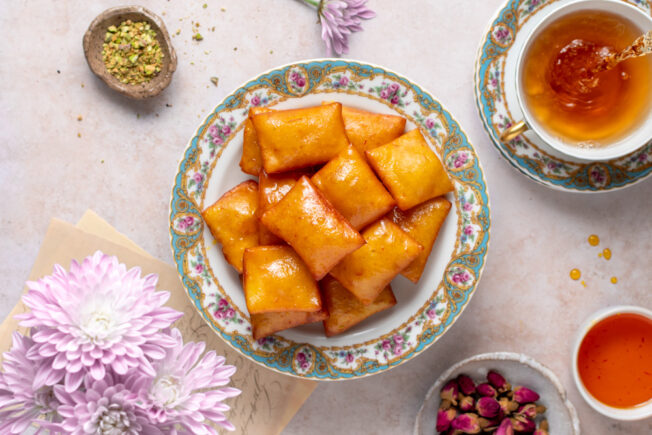
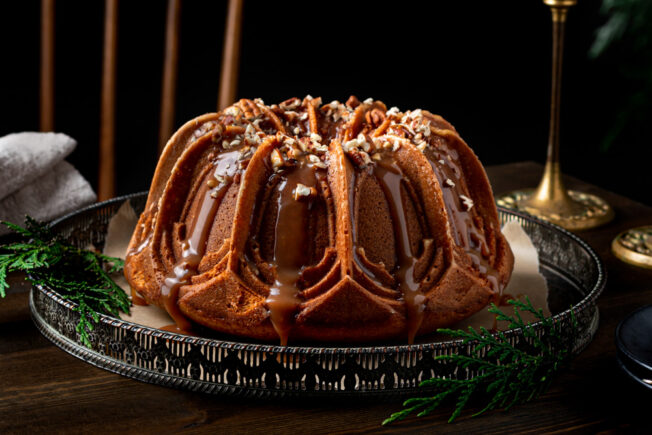
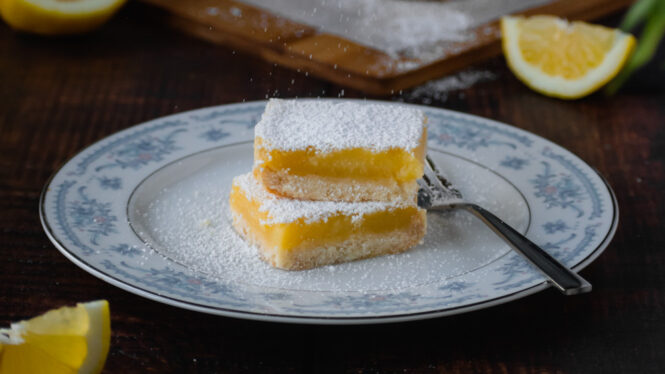
5 comments
Nice recipe! Thank you! 😊
Thank you! Glad you liked it! 🙂
The best Pavlova ever 😋❤️
Thank you for your recipe.
I’ve done it several times and always turns delicious and perfect ❤️
I’m so glad to hear!! Thank you 🙂